 |
 |
 |
| |
Randomised study of switch to DTG/RPV in subjects with
HIV RNA <50c/ml and archived K103N over 48 weeks
|
| |
| |
AIDS 2022 July 29-Aug 2 Montreal
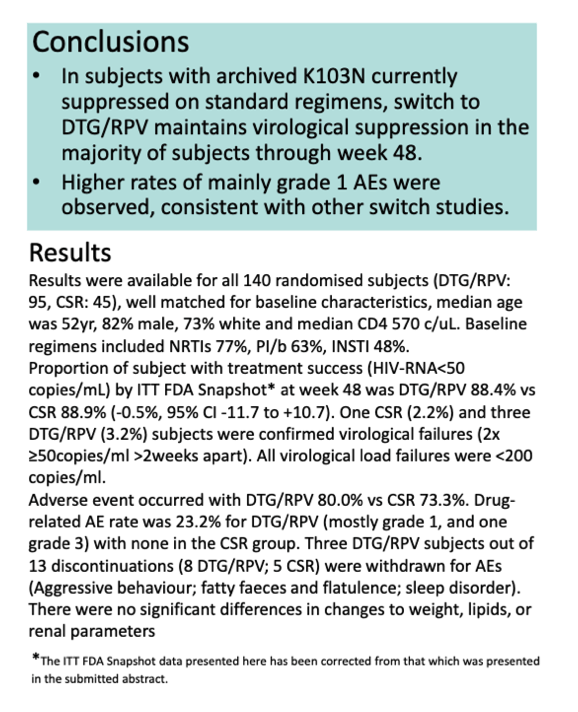
Presenter
Graeme Moyle
Authors
G. Moyle * (1), L. Assoumou (2), J.-M. Molina (3), F. Post (4), A. Curran (5), S. Rusconi (6), S. De Wit (7), C. Stephan (8), F. Raffi (9), M. Johnson (10), M. Del Mar Masia (11), J. Vera (12), K. Morris (13), A. Duffy (13), C. Fletcher (13), A. Pozniak (14)
Institutions
(1) Chelsea and Westminster Hosptal, HIV, London, United Kingdom, (2) ANRS, Pierre Louis Institute of Epidemiology and Public Health, UMR-S 1136, INSERM, Sorbonne Universités UPMC Paris Univ 06, Paris, France, (3) Hospital Saint Louis, Paris, France, (4) Kings College NHS Foundation Trust, London, United Kingdom, (5) Hospital Universitario Vall d''Hebron, Barcelona, Spain, (6) University of Milan, Department of Biomedical and Clinical Sciences "Luigi Sacco" ASST, Milano, Italy, (7) University Hospital of Saint-Pierre, Brussels, Belgium, (8) Goethe-Universitat Frankfurt, Frankfurt, Germany, (9) University Hospital of Nantes, Hôpital Hôtel-Dieu, Service d''Infectiologie, Nantes, France, (10) Royal Free London NHS Foundation Trust, London, United Kingdom, (11) General University Hospital of Elche, Infectious Diseases Unit, Elche, Spain, (12) Elton John Centre '¨Brighton and Sussex University Hospitals, Brighton, United Kingdom, (13) Research Organisation (Kings Cross), London, United Kingdom, (14) Chelsea and Westminster NHS Foundation Trust, London, United Kingdom
program abstract
BACKGROUND: DTG/RPV 2-drug regimen was studied in virologically suppressed switched subjects with no prior treatment failure history or resistance. Viruses with NNRTI resistance mutation K103N retain in-vitro susceptibility to RPV. Potential to maintain viral suppression with DTG/RPV in subjects with documented K103N currently suppressed on other regimens was investigated.
METHODS: This is a European, open-label, multi-centre, exploratory study randomised 2:1 over 48 weeks of switch to DTG/RPV vs continuing current suppressive regimen (CSR) in treatment experienced, HIV-1 subjects with documented, prior K103N mutation. Prior PI and NRTI mutations were permitted. Mutations known to reduce susceptibility to RPV or DTG, INSTI failure history, or contraindications to DTG or RPV were exclusions.
RESULTS: Results were available for all 140 randomised subjects (DTG/RPV: 95, CSR: 45), well matched for baseline characteristics, median age was 52yr, 82% male, 73% white and median CD4 570 c/uL. Baseline regimens included NRTIs 77%, PI/b 63%, INSTI 48%.
Proportion of subject with treatment success (HIV-RNA<50 copies/mL) by ITT FDA Snapshot at week 48 was DTG/RPV 90.5% vs CSR 88.9% (-1.5%, 95% CI -12.3 to +9.8). One CSR (2.2%) and three DTG/RPV (3.2%) subjects were confirmed virological failures (2x '¥50copies/ml >2weeks apart). All virological load failures were <200 copies/ml.
Adverse event occurred with DTG/RPV 80.0% vs CSR 73.3%. Drug-related AE rate was 23.2% for DTG/RPV (mostly grade 1, and one grade 3) with none in the CSR group. Three DTG/RPV subjects out of 13 discontinuations (8 DTG/RPV; 5 CSR) were withdrawn for AEs (Aggressive behaviour; fatty faeces and flatulence; sleep disorder). There were no significant differences in changes to weight, lipids, or renal parameters.
CONCLUSIONS: In subjects with archived K103N currently suppressed on standard regimens, switch to DTG/RPV maintains virological suppression in the majority of subjects through week 48. Higher rates of mainly grade 1 AEs were observed, consistent with other switch studies.




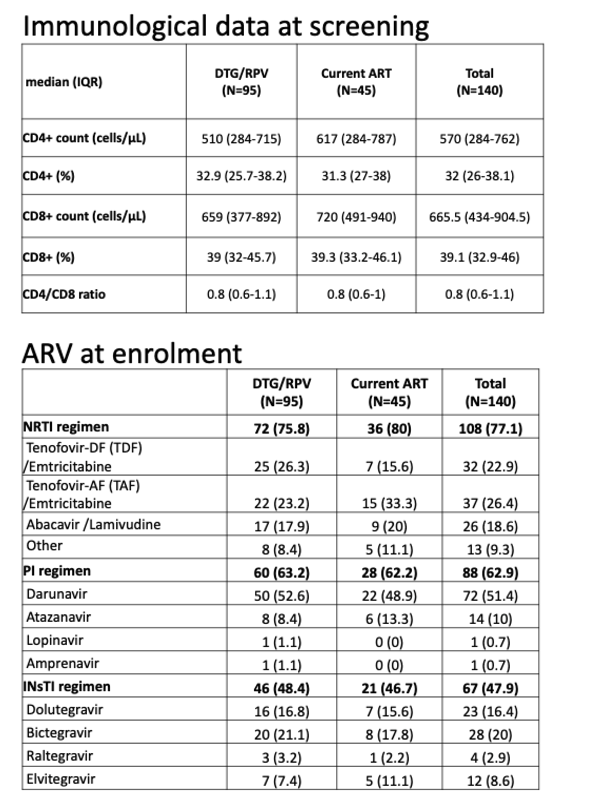
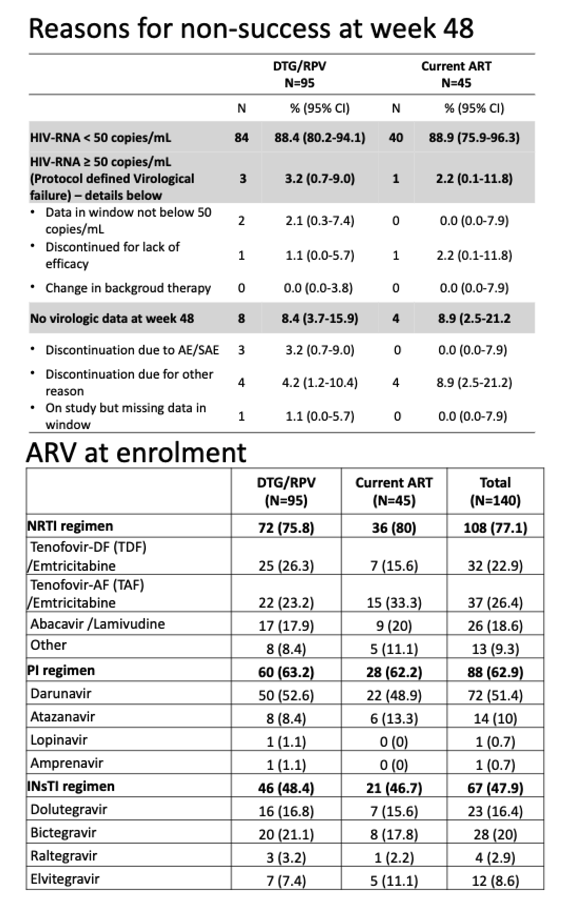
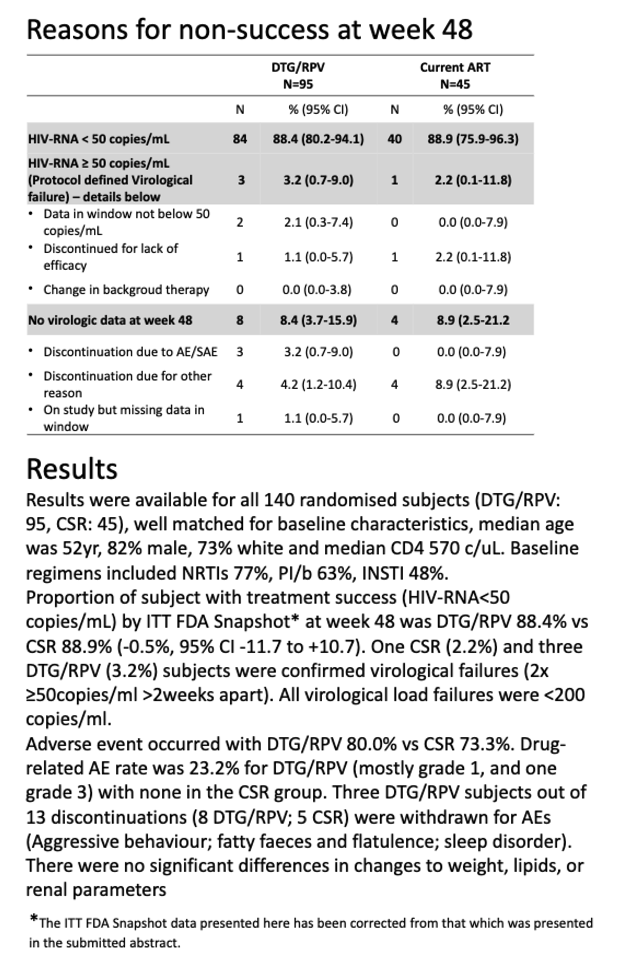
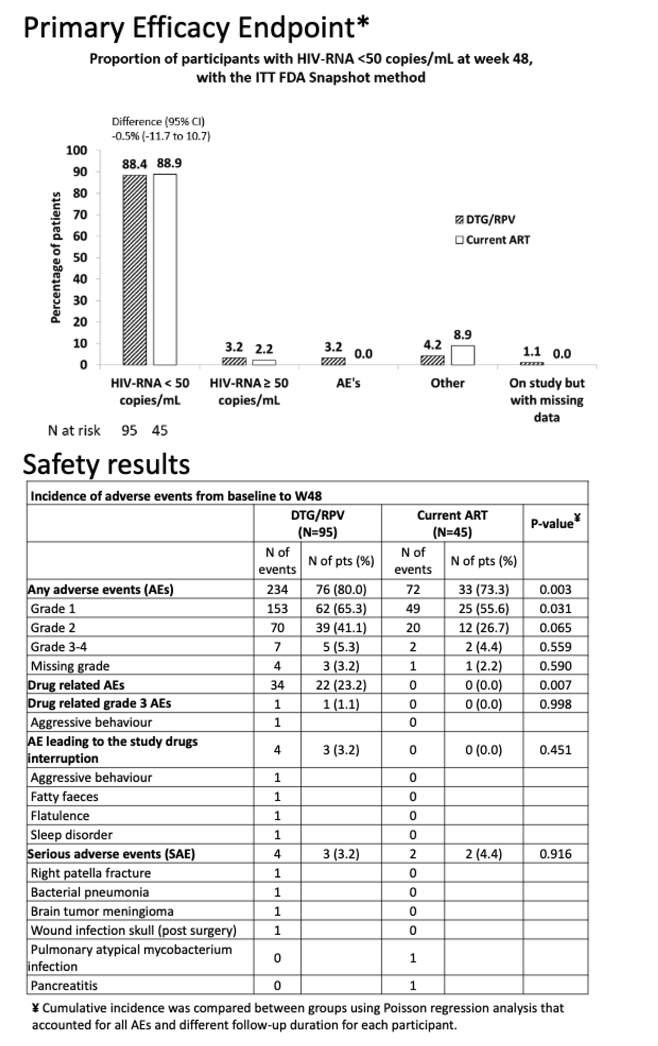
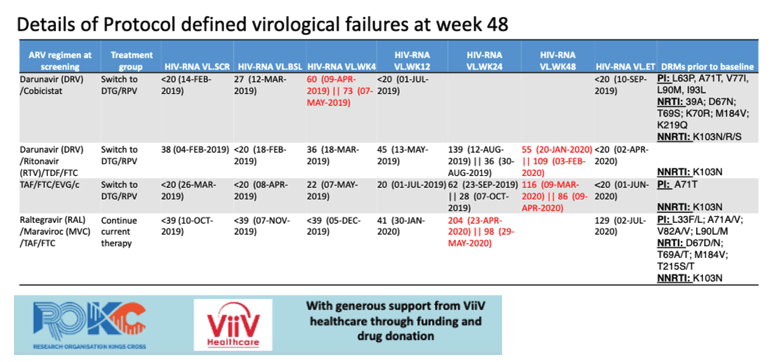
|
| |
|
 |
 |
|
|